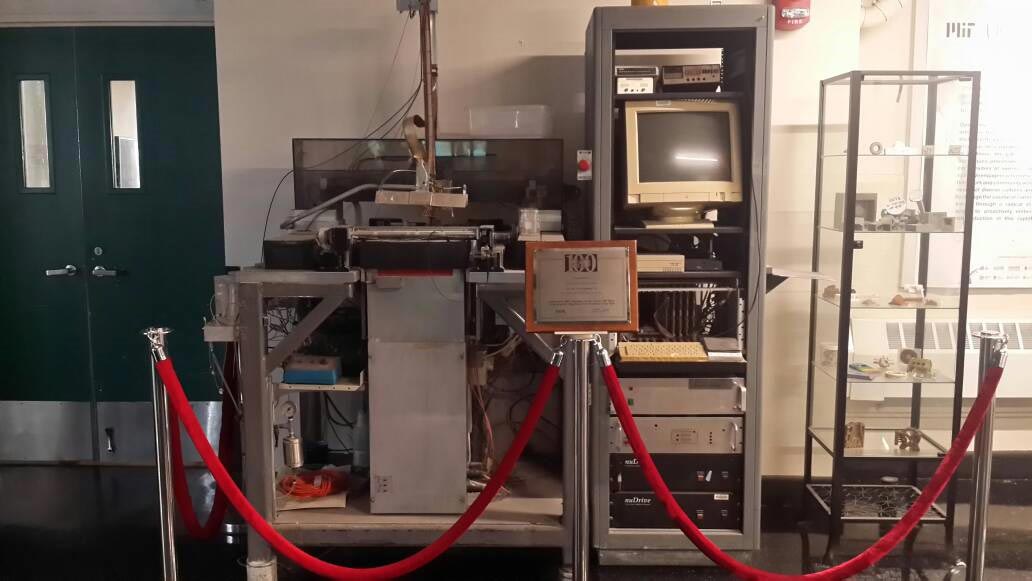The world’s first 3D printer stands in a corridor at the Massachusetts Institute of Technology in Boston, USA. As I walked past it rekindled memories of the little 3D printer that was on demonstration at a pub in Mumbai some weeks ago. Clearly, 3D printers have come a long way from the first one. Even though the first printer is only 34 years old, it is already museum-worthy.
These are not the only times that I have had a brush with 3D printing. At the exhibition at COP21 in Paris, the US Department of Energy had displayed a working, 3D printed car and mentioned that at an earlier auto show the car was actually 3D printed in front of the audience and driven off stage after the “printing” task was complete. This technology is definitely on its way to change manufacturing in the world.
When you mention the name Charles Hull most people probably have no idea about him even though printing an object in a three-dimensional form, called has been around since the 1980s. It has received more attention lately because of the materials that can now be used for printing. The printers are becoming more affordable with time and are commercially producing parts used in aircrafts such as the Boeing 787 Dreamliner.
3D printing can profoundly affect the way we design, produce, buy and distribute goods in many diverse sectors. The Belgian chocolate shop, Miam Factory makes 3D chocolates that are ready to eat straight after printing. In Russia, a 400-square-foot home (37 square meters) was built at a cost of about INR 700,000 ($10,000) in just a day. 3D printing to manufacture implants that treat orthopaedic deformities and injuries are becoming a commonplace. A company called 3D4AgDev helps a local blacksmith print agricultural tools which are used by farmers, mostly women, in Tanzania. More power to them!
The possibilities for mobility are quite mind-boggling. Strati claims to have launched the first 3D printed electric car in 2014. After this, here have been at least 16 different types of 3D printed electric cars which have been made. This means that in the not so distant future you could walk into a car dealership, design a car, get it fabricated by an onsite machine and drive off! Unless you want to get into a flying car.
There are a many such technologies that are causing transformative changes. Siri may feel silly today, but imagine having a personal assistant that can cater to your needs simply because you spoke to it. Imagine your phone getting charged by the light from the lamp as it rests on your table. And think of the energy generated by the activity of walking getting converted to electrical energy. And body parts getting printed to replace the ones inside you, eliminating the need for organ donation and creating the possibility of living healthily forever!
Yes, we are in the midst of a technological revolution. Ten years from now life on earth will be very different. Change will occur as it always does, only this time we will experience acceleration of a kind that makes the Internet seem like child’s play. Some jobs will disappear and new ones will emerge. Some things we do will not be required anymore and we will be enabled to do things we didn’t imagine we could do.
Suddenly, the old order can become fragile. Countries like India can leapfrog many stages of development and be ready for the future. And the losers now could be winners soon for, as Bob Dylan said many years ago, the times they are a-changing.
 Anirban Ghosh is the Chief Sustainability Officer at the Mahindra Group. He has been working with Group in Sales, Marketing, and Strategy since 1999 and has been recognized as a distinguished CSO in his current role. A gold medal winning engineer from Jadavpur University, Calcutta, Ghosh has pursued doctoral studies in Marketing Management at IIM Ahmedabad. He enjoys music, reading, traveling, driving, cricket and tennis. He is an active public speaker and has represented the nation at the Festival of India across multiple nations.
Anirban Ghosh is the Chief Sustainability Officer at the Mahindra Group. He has been working with Group in Sales, Marketing, and Strategy since 1999 and has been recognized as a distinguished CSO in his current role. A gold medal winning engineer from Jadavpur University, Calcutta, Ghosh has pursued doctoral studies in Marketing Management at IIM Ahmedabad. He enjoys music, reading, traveling, driving, cricket and tennis. He is an active public speaker and has represented the nation at the Festival of India across multiple nations.
Views of the author are personal and do not necessarily represent the website’s views.
Thank you for reading the story until the very end. We appreciate the time you have given us. In addition, your thoughts and inputs will genuinely make a difference to us. Please do drop in a line and help us do better.
Regards,
The CSR Journal Team

